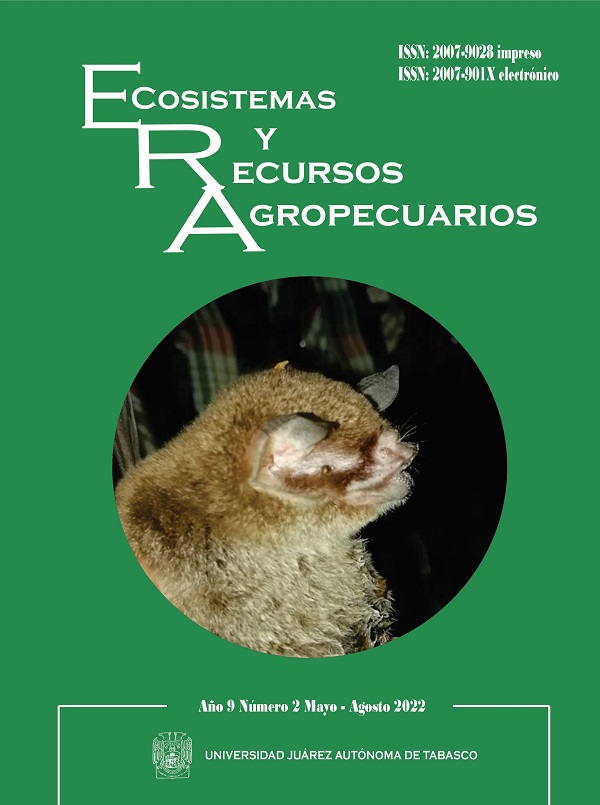Spittlebug Clastoptera achatina (Hemiptera: Clastopteridae) on pecan trees: Population dynamics, distribution and efficacy of insecticides
DOI:
https://doi.org/10.19136/era.a9n2.3335Abstract
The spittlebug Clastoptera achatina is a hemiptera that decreases the quality and production of the nut by feeding on the sap and covering the stigmas with its excretions. The objective of this research was to determine the population fluctuation, the distribution in the treetop and the effect of five insecticides on spittlebugs. The results show three population peaks, the most abundant was during the summer in the municipality of La Cruz with 56% of infested shoots between 2 and 4 m high in the eastern and northern quadrants of the tree. The insecticides sulfoxaflor (3.6 and 7.2 g of a.i. 100 L−1 of water) and chlorpyrifos (72 g of a.i. 100 L−1 of water) presented a control of 100% at 72 and 24 h, respectively, up to 7 days after application. The results contribute to the development of strategies for the control of spittlebugs in pecan. trees.
Downloads
Downloads
Published
Issue
Section
License
Copyright (c) 2022 Ecosistemas y Recursos Agropecuarios

This work is licensed under a Creative Commons Attribution-NonCommercial-ShareAlike 4.0 International License.
Aviso de copyright
Los autores que se envían a esta revista aceptan los siguientes términos:
una. Los autores conservan los derechos de autor y garantizan a la revista el derecho a ser la primera publicación del trabajo con una licencia de atribución de Creative Commons que permite a otros compartir el trabajo con un reconocimiento de la autoría del trabajo y la publicación inicial en esta revista.
B. Los autores pueden establecer acuerdos complementarios separados para la distribución no exclusiva de la versión del trabajo publicado en la revista (por ejemplo, en un repositorio institucional o publicarlo en un libro), con un reconocimiento de su publicación inicial en esta revista.
C. Se permite y se anima a los autores a difundir su trabajo electrónicamente (por ejemplo, en repositorios institucionales o en su propio sitio web) antes y durante el proceso de envío, ya que puede conducir a intercambios productivos, así como a una cita más temprana y más extensa del trabajo publicado. (Consulte El efecto del acceso abierto).


